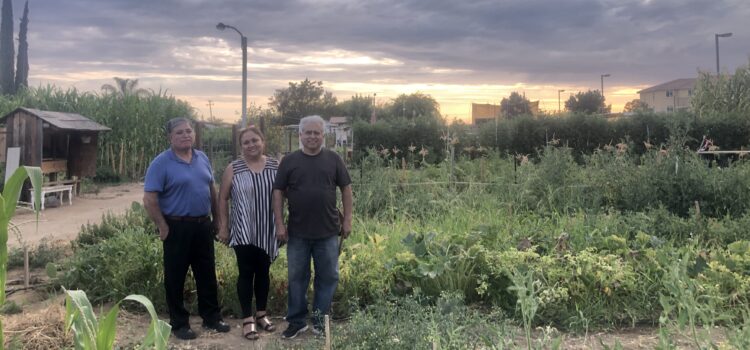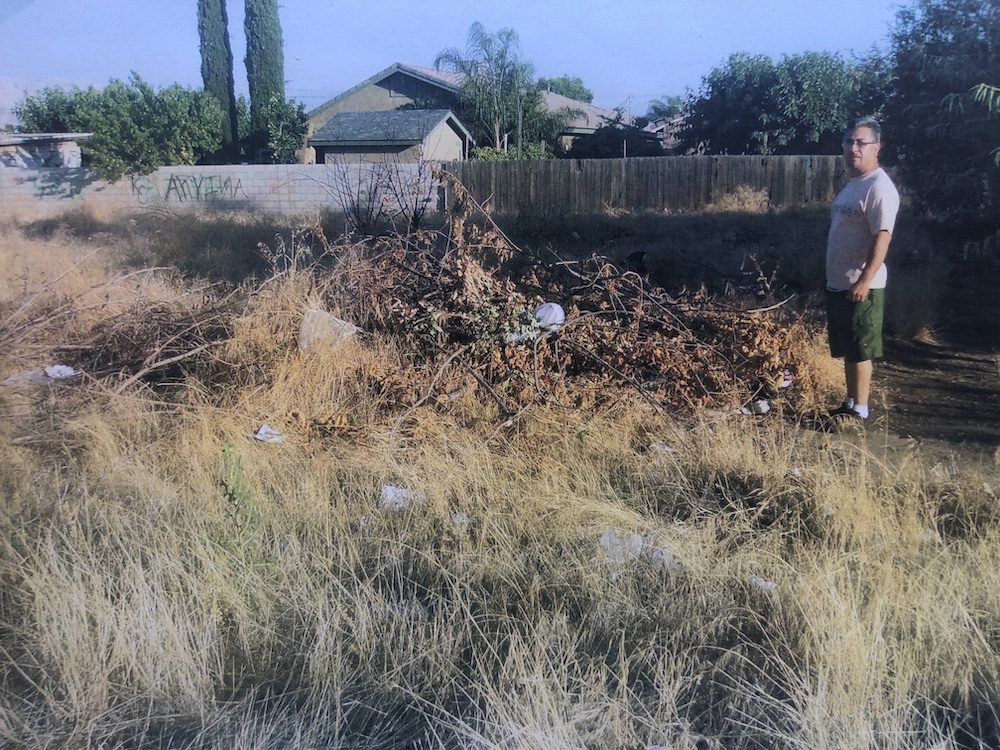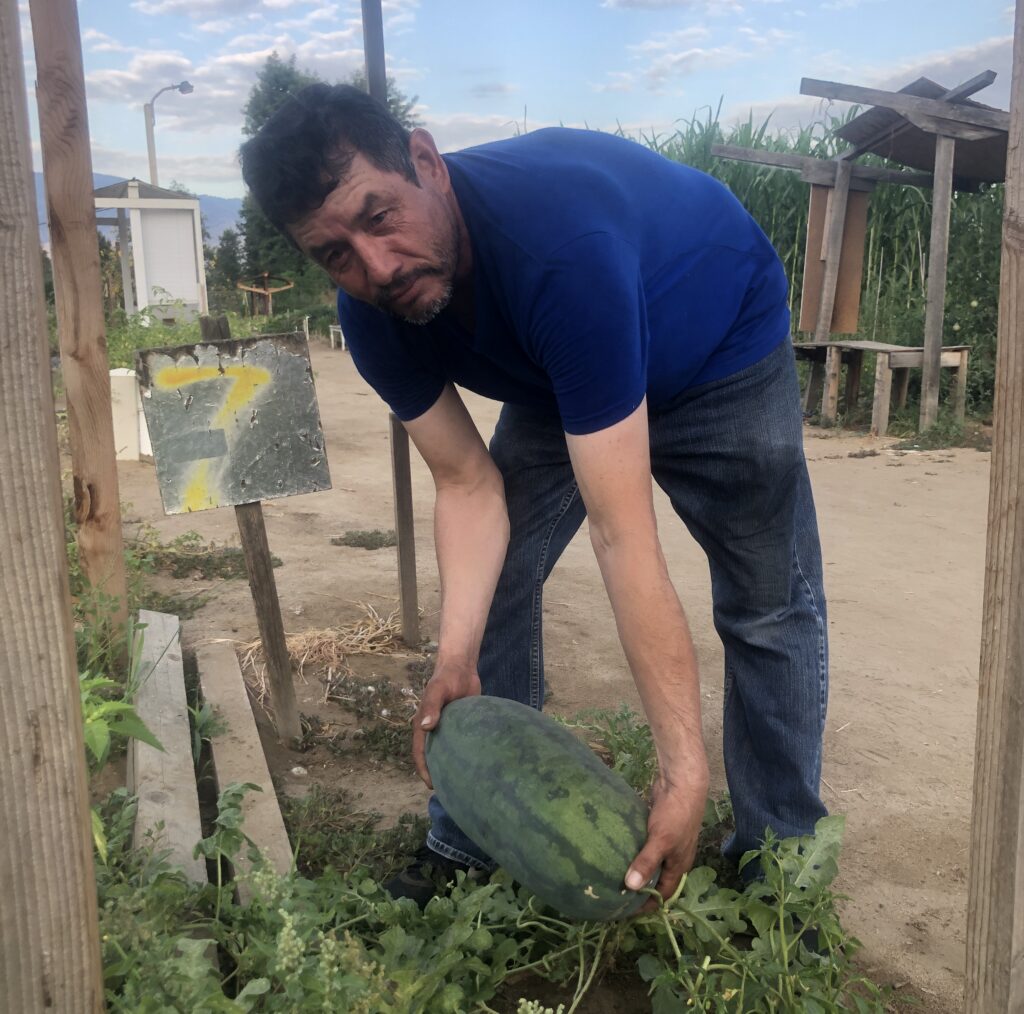
Featured photo: Estela and Roberto Garcia, who head the committee for the garden, and Gustavo Aguirre from The Center on Race, Poverty and the Environment, stand in front of the Arvin Community Garden.
Though Arvin is surrounded by food that feeds the state — grapes, carrots, potatoes, cherries, onions and almonds — many farm workers in the community struggle to put fresh food on their own tables. It wasn’t until recently when residents could literally enjoy the fruits of their labor, all thanks to the Arvin Community Garden.
The watermelon and cantaloupes are heavy and nearly ripe — perfect for a fresh fruit salad — and so are the okra, swiss chard, squash, peanuts and nopales. The fresh herbs and peppers, such as tomatoes, serrano and habanero chilies and cilantro, give any spicy salsa the perfect kick.
“It’s another flavor than the flavor of a tomato in a supermarket,” said Estela Garcia, who heads the garden’s committee along with her husband, Roberto.
The idea of the garden came about nearly six years ago, with help from The Center for Race, Poverty and the Environment. Together the community and organization wanted to find an alternative to fighting against the forces in their community that are behind pollution, pesticides and poverty.
“Yes, we are working on environmental issues,” said Gustavo Agguire, director of organizing at CRPE. “Yes, we are working in low-income communities, but we are just reacting to things, not proactive.”
It’s not very often Arvin residents are exposed to pesticide-free produce; however, the garden changes that. It’s a way for low-income people to have access to fresh, healthy, pesticide-free food.
Once a plot of land just off of Comanche Road was donated by committee member Sal Partida, the planning phases began.

“Do you think we can have a community garden here,” Partida asked Aguirre about the uneven, overgrown land that had weeds and trash strewn across it.
CRPE began working with experts from University of California, Davis and other institutions to help gardeners learn to grow without using pesticides.
The committee got to work on cleaning the land and installing an irrigation system, but the water district required the committee to instal a costly industrial hook-up.
Thanks to donations from then-Supervisor Karen Goh and committee members, they were able to cobble together the $12,000 they needed — one year later — to bring water to the garden.
The first year the lots were divided into 20 plots, but as interest grew, those plots were subdivided again and again. Now there are 39 plots that measure 18 by 25 feet.

Rafael Moreno has been working in the garden for the past three years. He enjoys seeing the fruits of his labor.
“I’m here to grow these tomatillos, tomatoes (and) zucchini,” Moreno said.
Gardeners can grow whatever they want, “Well, as long as it’s legal,” Aguirre said.
Some seeds come from the grocery store, Walmart, Home Depot or even their agricultural employers, while more exotic seeds come from a little further afield, like the piquant Oaxacan herb pipicha.
Everything has a purpose in the garden. The sunflowers don’t just provide beauty. They also attract bees to pollinate the garden.
And nothing goes to waste. Estela said the corn didn’t grow according to plan this year.
“That’s okay,” she said. “The husks will get used for tamales.”
The gardeners take their bounty home to their families and share with friends, and anything leftover goes to the local church.
Over time, the committee has installed amenities — shaded seats and a small playground for children to enjoy while their elders tend to the garden.
The Arvin Community Garden started a trend in Kern. Shafter built their own garden, following the installation of Arvin’s garden, and Wasco plans to start one, too.
Roberto Garcia said that above all this project is about empowering people to take control over what they put in their bodies.
“This project gave the whole city a place where everyone could come plant,” Garcia said. “There were a lot of people who didn’t have the right knowledge or many who live in apartments and don’t have the chance they now have here.”
South Kern Sol is a youth-led journalism organization in Kern County. In their stories, reporters shine light on health and racial disparities in under-served communities across Kern. For more stories by South Kern Sol, head to southkernsol.org.